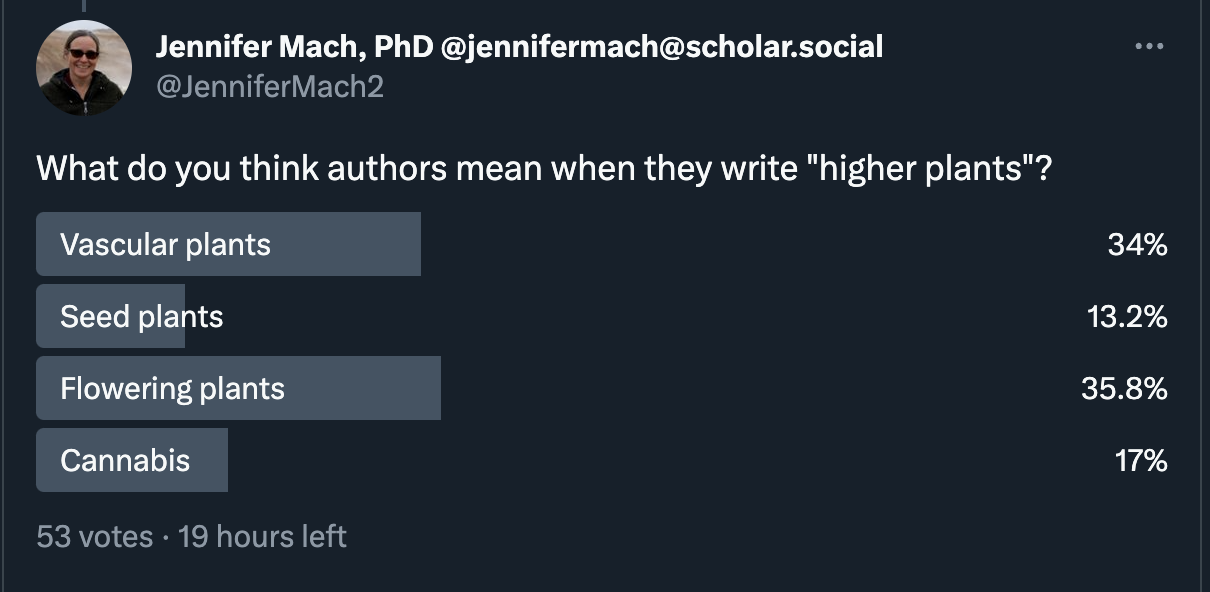Problem terms: Higher/lower plants
In 2021, Stuart F. McDaniel published a well-written, thoughtful paper in New Phytologist titled “Bryophytes are not early diverging land plants”. In this paper, he called out the use of terms such as “higher” or “lower”, “basal lineage”, “ancient”, and “early diverging” as being inaccurate interpretations of phylogeny that harken back to when all organisms were classified into a Scala Naturae, with humans near the top and plants near the bottom, right next to minerals. McDaniel recommends using “the language of family relations, like sister groups and their common ancestors” to describe relationships between lineages.
As editors, one of our first thoughts about “higher plants” is that, in addition to being incorrect, it’s also unclear. Indeed, a highly unscientific poll on social media showed that different readers interpret the term differently. 
So, let’s help our authors––specifically, if you just wrote “higher plants” in your manuscript, what should you say instead? Our advice: be specific and try some of these terms instead.
Vascular plants (tracheophytes): This includes angiosperms and gymnosperms, along with clubmosses, horsetails, and ferns.
Seed plants (spermatophytes): This narrows your focus to angiosperms and gymnosperms.
Flowering plants (angiosperms): Narrowing even further to just angiosperms.
And of course, we absolutely recommend that you consult a science editor to help make sure your meaning comes through!
